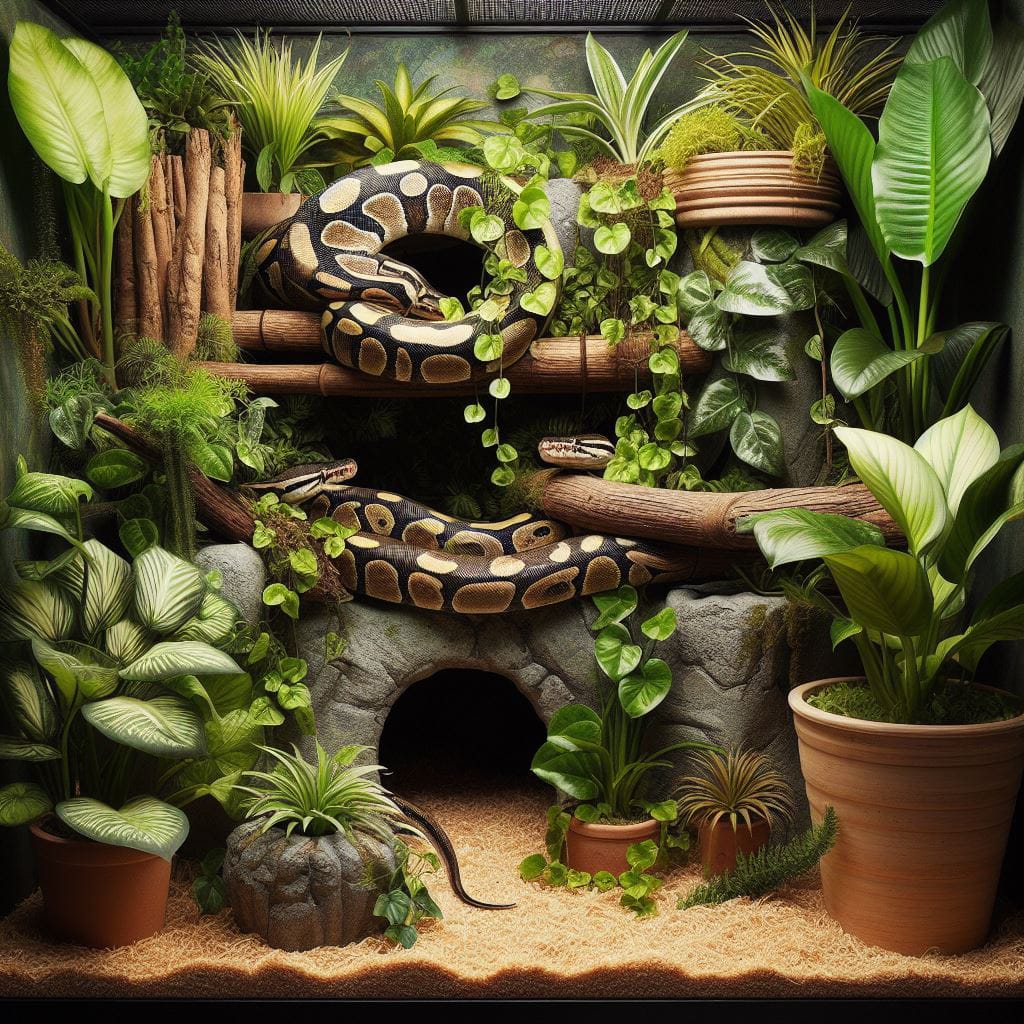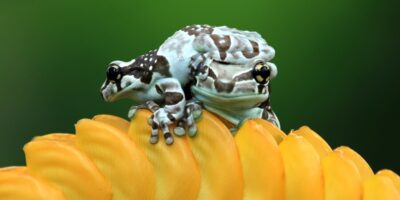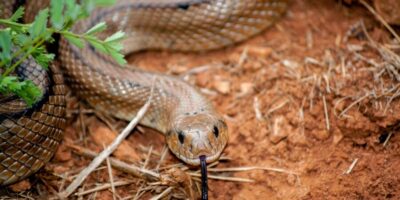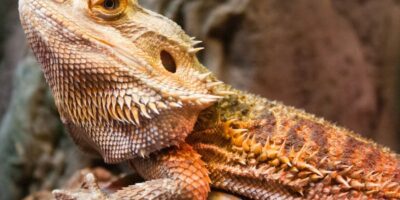Creating a naturalistic environment for ball pythons is crucial for their overall well-being. These snakes are native to tropical regions and thrive in habitats that mimic their natural surroundings. By providing a naturalistic environment, we can help reduce stress and promote their physical and mental health.
One way to achieve this is by incorporating live plants into their enclosure. Live plants not only enhance the aesthetic appeal but also offer numerous benefits. They provide hiding spots, climbing opportunities, and a sense of security for ball pythons.
Factors to Consider When Choosing Plants
Choosing plants that are safe for ball pythons is of utmost importance to ensure their well-being and prevent potential health issues. Ball pythons are curious creatures and may interact with their surroundings, including plants, by exploring, climbing, or even nibbling on them. Selecting non-toxic plants is crucial to taking care of ball pythons because certain plants can be harmful or even poisonous to these reptiles if ingested. By prioritizing non-toxicity, we can minimize the risk of digestive problems, allergic reactions, or other health complications.
When selecting plants for a ball python’s enclosure, it is crucial to consider their hardiness and ability to thrive in the specific conditions of the enclosure. This includes factors such as temperature, humidity, and lighting. Choosing plants that can tolerate and adapt to these conditions is essential for their long-term health and well-being. Plants that are well-suited to the enclosure’s environment will not only survive but also flourish, enhancing the overall aesthetic appeal and creating a more naturalistic habitat for your ball python.
Additionally, it is important to prioritize low-maintenance plants that require minimal care. This ensures that the plants can thrive without placing a significant burden on your time and resources. Opting for plants that are easy to care for will make it more feasible to maintain a healthy and visually appealing environment for your ball python.
Options:Ball Pythons Safe Plant
The Snake Plant, also known as Sansevieria, is an excellent choice for a ball python enclosure due to its hardiness, low maintenance, and air-purifying qualities. Snake Plants are incredibly resilient and can tolerate a wide range of conditions, including varying temperatures and light levels. They require minimal care, making them perfect for busy individuals or those new to plant care. Snake Plants have a unique ability to purify the air by removing toxins and releasing oxygen, creating a healthier environment for both your ball python and yourself. Its attractive, upright leaves add a touch of elegance to the enclosure while requiring little attention.
Another great plant option is the Pothos or Epipremnum aureum. This trailing plant is known for its ease of care and ability to thrive in various light conditions. Pothos can adapt to low-light areas, making it a suitable choice for enclosures with limited natural light. It is also a fast-growing plant, which means it can quickly fill up the space and create a lush, green environment. With its trailing nature, the Pothos can provide hiding spots and climbing opportunities for your ball python, enhancing their enclosure’s naturalistic feel.
Spider Plant (Chlorophytum comosum) is a fantastic choice for a ball python enclosure! Not only does it have a unique spider-like appearance with its arching leaves and cascading baby spider plants, but it also boasts excellent air-purifying properties. The Spider Plant is known for its ability to remove toxins from the air, making it a great addition to creating a healthier environment for your ball python.
Another wonderful option to consider is Bromeliads from the Bromeliaceae family. These plants come in vibrant colors, adding a pop of tropical beauty to the enclosure. They have the remarkable ability to hold water in their central cups, which can create a mini-habitat for your ball python and increase humidity levels. With their stunning appearance and suitability for creating a tropical atmosphere, Bromeliads can truly transform your ball python’s enclosure into a lush and visually appealing habitat.
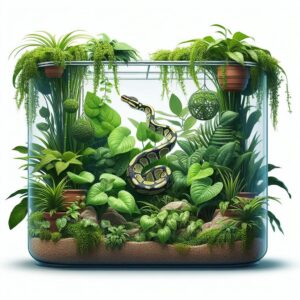
Plant Placement and Enclosure Design
When it comes to creating a safe and healthy environment for your ball python, using non-toxic planters and substrates is super important. You want to avoid any materials that could potentially release harmful chemicals into the enclosure. Opting for natural materials like ceramic or terracotta for planters, and safe substrates like coconut fiber or cypress mulch, ensures that your ball python won’t be exposed to any harmful substances.
Temperature is absolutely crucial for maintaining the proper conditions in your ball python’s enclosure, These snakes are ectothermic, which means they rely on external heat sources to regulate their body temperature. It’s important to provide a temperature gradient within the enclosure, with a warm side and a cool side. This allows your ball python to move between different temperature zones and thermoregulate as needed. The warm side should be around 88-92°F (31-33°C), while the cool side should be around 78-82°F (25-28°C).
Maintaining the right temperature range is essential for your ball python’s digestion, metabolism, and overall well-being. So, make sure to use appropriate heating equipment, such as heat mats or ceramic heat emitters, and regularly monitor the temperature to ensure a comfortable and healthy environment for your snake. Additionally, it’s crucial to regularly monitor and trim your plants to prevent overgrowth or potential hazards. Some plants can grow quickly and become too large or dense, limiting your ball python’s movement or blocking their access to hiding spots. By keeping an eye on plant growth and trimming as needed, you can maintain a safe and comfortable habitat for your ball python.
what plants are safe for ball pythons
Using non-toxic planters and substrates is essential for the safety and well-being of your ball python. 🌿🐍 It’s important to avoid materials that could potentially leach harmful chemicals into the enclosure. Opt for planters made of natural materials like ceramic or terracotta, and choose substrates that are safe for reptiles, such as coconut fiber or cypress mulch. This way, you can ensure that your ball python won’t be exposed to any harmful substances.
Additionally, regularly monitoring and trimming your plants is crucial to prevent overgrowth and potential hazards. Some plants can grow rapidly and may become too large or dense for the enclosure, which can limit your ball python’s movement or obstruct their access to hiding spots. By keeping an eye on the growth of your plants, you can trim them as needed to maintain a safe and comfortable environment for your ball python.
Conclusion
To recap, using safe and suitable plants in your ball python’s enclosure is crucial for their well-being. By opting for non-toxic planters and substrates, you can ensure that your snake is not exposed to any harmful chemicals. Regularly monitoring and trimming the plants helps prevent overgrowth and potential hazards, ensuring a safe and comfortable environment for your ball python.
FAQs
Q: Can ball pythons eat the plants in their enclosure?
Ball pythons are carnivores and typically do not consume plants. However, it’s essential to choose non-toxic plants to eliminate any risk of ingestion.
Q: Do live plants attract pests or insects to the enclosure?
While live plants can attract insects like fruit flies, proper care and maintenance can mitigate this risk. Regularly inspecting and cleaning the enclosure can help prevent infestations.
Q: How often should I water the live plants in my ball python’s habitat?
The watering frequency depends on factors such as plant species, humidity levels, and substrate moisture. Generally, aim to keep the soil moist but not waterlogged, adjusting as needed based on environmental conditions.
Q: Can I use artificial plants instead of live ones?
Artificial plants can be used as decorations, but they don’t offer the same benefits as live plants. Live plants contribute to a healthier environment by oxygenating the air and regulating humidity.
Q: Are there any plants I should avoid placing in my ball python’s enclosure?
Yes, certain plants are toxic to reptiles and should be avoided at all costs. Research each plant thoroughly before introducing it into your pet’s habitat.
Q: How can I prevent my ball python from damaging or uprooting the plants?
Providing adequate hiding spots and enrichment activities can help prevent your ball python from disturbing the plants. Additionally, securing plants in place with rocks or other decorations can minimize damage.
